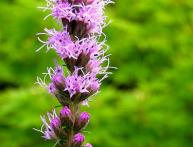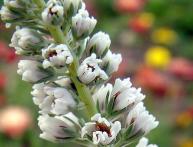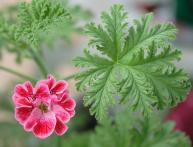Thin-leaved marigolds, how to care for and breed them

Marigolds are one of the most common and popular garden plants. They are most often found in Ukraine and Russia, where they are called “Chernobryvtsy”. After all, how can you do without them in your garden? America is the birthplace of these flowers.
These are the most common flowers that do not require special care and are not that difficult to grow. Even the most inexperienced person in this matter can handle them. Thin-leaved marigolds are used in folk medicine, perfumery, culinary and various industries.
Content:
- What varieties and types of marigolds exist?
- How are marigolds grown?
- When should you plant marigold seedlings?
What varieties and types of marigolds exist?
Marigolds differ from each other in their inflorescence structure, different sizes and various colors. They are divided by variety into the following groups:
- Dianthus
- Anemoneaceae
- Moss
- Simple
- Semi-double
- Chrysanthemum-shaped
Also, marigolds are divided into tall, medium, low and dwarf. Tall marigolds are approximately 55-60 cm high, medium marigolds are about 40 cm, low marigolds grow up to 40 cm, and dwarf marigolds grow up to 20 cm in height.
In general, there are many types of marigolds:
- The most popular is the Mexican marigold, in other words thin-leaved. The oldest, they have been planted since 1795. Bush approximately 20-40cm high. The leaves of this species are small, light green and narrow. They are the ones who need light and warmth.Marigolds can be used as a seasoning.
- The second most popular species is French marigold. The height reaches 30-50 cm, and they bloom the longest, until October. The inflorescences are 3-7 cm in diameter. These marigolds grow in absolutely any soil. Also, they easily tolerate cold and rain.
- The third species is African marigold, or in other words - erect. In this species, the bush is erect, has large inflorescences, double flowers, the diameter of which is about 13 cm. The strong stems of marigolds grow up to 110-130 cm. These flowers can't stand rain, as they lose their beautiful appearance and the roots begin to rot.
How are marigolds grown?

Professional flower growers know that fine-leaved marigolds are not demanding and unpretentious plants, but adapt to any conditions of the living environment.
There are even subspecies that live on highways, and they tolerate various exhaust gases, dust, poor soil and smog.
Basically, almost all plants love open areas, that is, sunny areas, but this is not necessary for marigolds! They can take root quite normally in a darkened area, or in complete darkness. Even so, they will grow, bloom, and delight people with their appearance and smell.
In order for marigolds to grow strong and large, you need to choose fertile soils, or at least neutral ones. The plant will be delighted with the shade, but will be able to adapt to it quite normally. Only one species, marigold erecta, does not like shade, and therefore begins to disappear.
Like every plant, marigolds love to be well cared for and cared for. That is why they delight the owner with their long flowering and growth.It is necessary to ensure that the plant grows on fertile lands, so it is worth feeding the soil with various fertilizers about 2-3 times during the entire growing season.
Also, marigolds can be grown at home in pots, bowls and boxes. They can put on the balcony, or on the windowsill. This is the simplest decorative flower, which is simply irreplaceable for decoration.
When should you plant marigold seedlings?

If you plant marigolds directly in open soil, then do not forget that they are sensitive to low temperatures. For example, if the air temperature is minus one, then your beautiful flower may, unfortunately, die.
That is why it is advisable to plant seedlings at home so that the flowers do not die immediately on the first night. It is recommended to do this in March or April, it all depends on the variety of marigold. If you plant on time, then already at the beginning of summer you will be able to observe beautiful and lush flowers!
Before planting marigolds, you need to make the soil nutritious using various minerals, also loose. We need to dig up the ground.
During the growth period, you need to maintain a temperature of 18 to 22 degrees. You need to water the seedlings once a week, or twice, this does not harm the plant. Transplantation into the ground occurs at the end of spring, that is, in May. You need to plant the plant 2-4 cm deeper than it was in the box.
If you want to plant marigolds directly into the soil, then you should do this in early June. This is the time that is considered the most favorable for planting. The first shoots of marigolds will appear within 6-10 days. After almost two months, the flowers themselves will appear.
In general, planting thin-leaved marigolds is very simple if you know what time is most favorable for planting.By the way, the smell of marigolds repels small pests. And for a person, the smell is very useful, as it calms the nerves and relieves stress.
How to care for marigolds, video instructions:
Interesting information about the vegetable garden










